![]()
![]()
![]()
Use LEFT and RIGHT arrow keys to navigate between flashcards;
Use UP and DOWN arrow keys to flip the card;
H to show hint;
A reads text to speech;
21 Cards in this Set
- Front
- Back
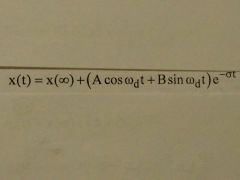
|
Underdamped RLC |
|
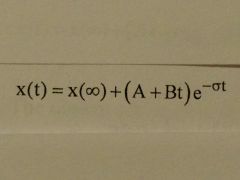
|
Critically damped RLC |
|
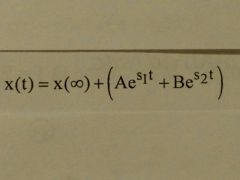
|
Overdamped RLC |
|
|
RLC: 2 real, different roots |
Overdamped |
|
|
RLC: 2 reall, identical roots |
Critically damped |
|
|
RLC: 2 complex,different roots |
Underdamped RLC |
|
|
Inductor current to inductor voltage |
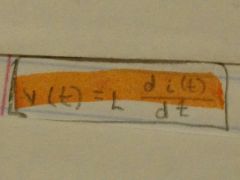
L times derivative of inductor current |
|
|
Capacitor voltage to capacitor current |
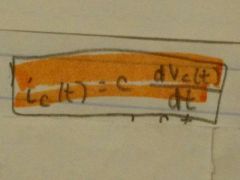
C times derivative of capacitor voltage |
|
|
Find R_th (R Thevenin) |
R_th = V_th / I_in or 1) zero out independent sources I source - open V source - short 2) remove load 3) dependent sources? Y - add test source where load was N- calculate R_eq |
|
|
Find V_th (V Thevenin) |
1) remove load 2) measure voltage across desired nodes |
|
|
Find I_N (I Norton) |
1) remove load 2) short circuit focus 3) calculate current over focus |
|
|
Impedence, Y |
1/Z components in parallel = add together |
|
|
KVL / Mesh or Loop Analysis |
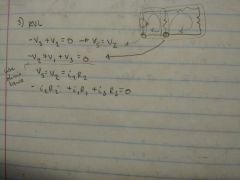
Voltage Law: sum up voltage drops = 0 1) pick a loop 2)Choose loop currents 3) write KVL for each loop (passive sign) 4) if loop includes a current source, I_s = I_loop A current source can only be on one loop |
|
|
KCL / Nodal Analysis |
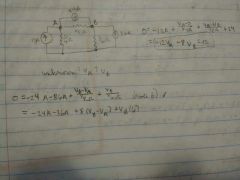
Current Law: current entering and exiting a node =0 |
|
|
Modified Nodal Analysis |
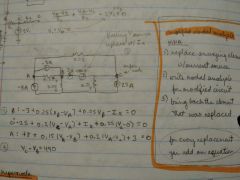
For voltage floating source
1) replace annoying element with current source 2) do nodal analysis for modified circuit 3) put element back in
For every element replaced, add an equation to relate it back to the circuit |
|
|
Supernode |
For floating sources 1) circle complication 2) write nodal analysis (keep individual node identities) 3) write equation inside supernode |
|
|
Superposition |
For multiple sources 1) turn off all sources but one 2) do analysis 3) repeat from step 1 4) add up all results for total |
|
|
Linearity |
Usually given a table or relations sith different values Make a system of equations and solve for desired values Applies for I and V (not P) |
|
|
Source transformation |
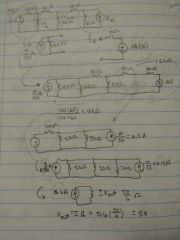
V_s in series with R = I_s in parallel with R Use V= IR to convert source values Fails when component has a controlling variable (specified voltage drop or current) |
|
|
Capacitors |
at "steady state" - becomes an open, I = 0 Adds in parallel Bad - sudden changes in voltage Doesn't matter - changes in current |
|
|
Inductors |
at "steady state" - becomes a short, ∆V = 0 Adds like a resistor Bad - changes in current Doesn't matter- changes in voltage |

